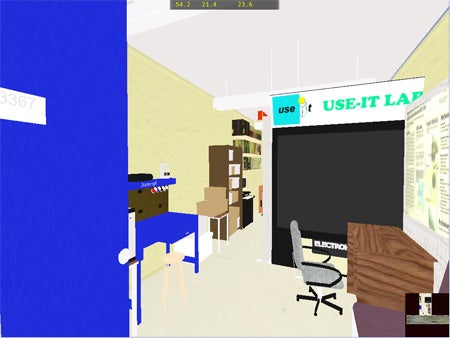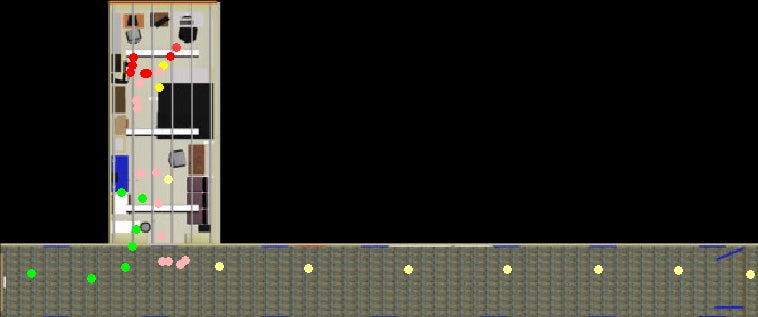Introduction
Virtual environments (VE) are becoming more prevalent in today's society. The most widely known examples of VEs are the virtual worlds and "maps" of video games. As technology becomes more advanced, these VEs also become more detailed, vivid and realistic.
Potential for application
The lab is currently looking at the possibility of using VEs to get user feedback on architectural project ideas before they are physically constructed. This way, potential projects can be scrutinized as much as the final product would be, while still in the design stage, allowing for accommodations and changes in the design based on the feedback.
Project description
The veMap project consists of a series of custom made virtual environments. Participants explore the environments providing feedback through comments as well as through galvanic skin response (GSR) readings. The results are plotted on a bird's-eye view map of the environment, where the location of a data point is the location it was taken, the colour is the emotion felt by the participant — as provided by the participant - and the saturation of the point is the relative intensity of the emotion (based on GSR reading). One of the main goals of the project is to determine if this application is viable, that is, whether or not the emotional responses to a virtual environment are similar enough to the real thing to justify making alterations to real designs. To aid in this, a virtual Use-IT lab (location of the study, seen below) was created and used in the study along side other VEs.

Figure: Virtual Use-IT lab used as one of the indoor VEs in the study

Figure: Example of veMap results for one participant (Use-IT lab VE)